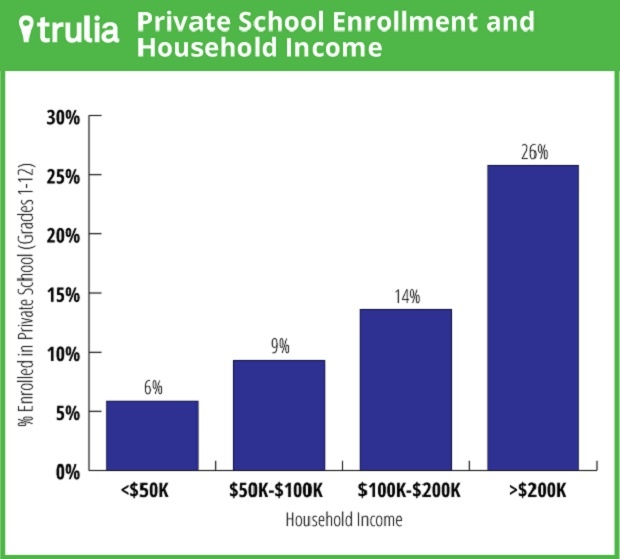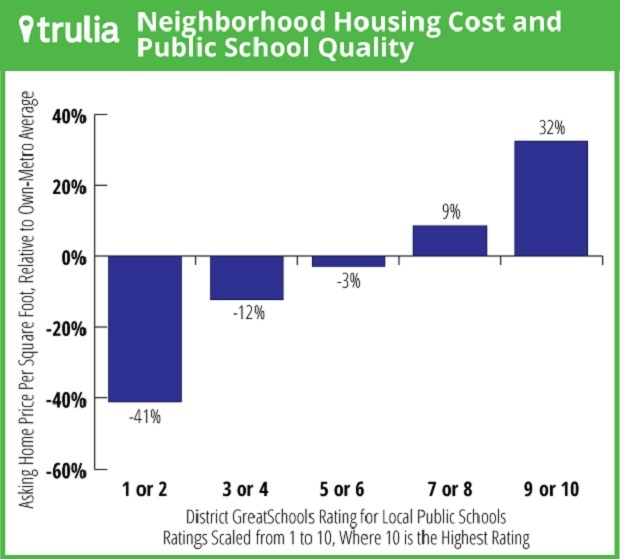|
New School Year - New School Laws
 While educators have been catching their breath over the course of the summer, California Governor Jerry Brown has been signing bills into law whose provisions will impact private schools. Two such measures that will effect a number of private schools and private school teachers are outlined, below. Both new laws will become effective January 1, 2015. AB 2127 (Ken Cooley - D. Rancho Cordova) AB 2127 represents a response to the growing concern over head injuries suffered while playing football. The following provisions apply to both public and private middle schools and high schools:
- High school and middle school football teams shall not conduct more than two full-contact practices per week during the preseason and regular season. By full-contact practice, the law refers to "a practice where drills or live action is conducted that involves collisions at game speed, where players execute tackles and other activity that is typical of an actual tackle football game." By preseason, the law refers to "a period of 30 days before the commencement of the regular season." By regular season, the law means "the period from the first interscholastic football game or scrimmage until the completion of the final interscholastic football game of that season."
- The full-contact portion of a practice shall not exceed 90 minutes in any single day.
- No full-contact practices are to be conducted during the off-season.
- The California Interscholastic Federation is urged (but not required) "to develop and adopt rules to implement this section."
- Any athlete suspected of sustaining a concussion or head injury during the course of an athletic activity must be immediately removed from the activity for the remainder of the day, and must not be permitted to return to the athletic activity until he/she has been evaluated by a licensed health care provider. The athlete in question must receive written clearance from a licensed health care provider prior to being allowed to re-engage in the athletic activity. Furthermore, if the licensed health care provider should determine that the athlete sustained a concussion or head injury, the athlete must complete "a graduated return-to-play protocol of no less than seven days in durations under the supervision of a licensed health care provider." By licensed health care provider, the law means "a licensed health care provider who is trained in the management of concussions and is acting within the scope of his or her practice."
- On a yearly basis, schools must provide athletes a head injury information sheet, which must be signed by the athlete and the athlete's parent or guardian and returned to the school before the athlete initiates practice or competition.
- The above requirements do not apply to students engaging in athletic activities during the regular school day, or as part of a physical education course as required by Education Code Section 51220(d).
AB 2560 (Susan Bonilla - D. Concord) AB 2560 imposes a mandate upon the California Commission on Teacher Credentialing that will require every applicant for an initial teaching credential, or for the renewal of a credential, to read and attest that "the applicant for the credential understands the duties imposed on a holder of a teaching credential or a services credential pursuant to the Child Abuse and Neglect Reporting Act." The requirement applies to both online applications, and applications submitted in paper form. The Child Abuse and Neglect Reporting Act is found in Section 11164 of the California Penal Code, which defines and describes the nature and responsibilities of "mandated reporters" of suspected child abuse and/or neglect. The new law contains the following template for the declaration to which an applicant for a new, or renewed teaching credential must attest: "As a documentholder authorized to work with children, it is part of my professional and ethical duty to report every instance of child abuse or neglect known or suspected to have occurred to a child with whom I have professional contact.
"I understand that I must report immediately, or as soon as practicably possible, by telephone to a law enforcement agency or a child protective agency, and will send a written report and any evidence relating to the incident within 36 hours of becoming aware of the abuse or neglect of the child.
"I understand that reporting the information regarding a case of possible child abuse or neglect to an employer, supervisor, school principal, school counselor, coworker, or other person is not a substitute for making a mandated report to a law enforcement agency or a child protective agency.
"I understand that the reporting duties are individual and no supervisor or administrator may impede or inhibit my reporting duties.
"I understand that once I submit a report, I am not required to disclose my identity to my employer.
"I understand that my failure to report an instance of suspected child abuse or neglect as required by the Child Abuse and Neglect Reporting Act under Section 11166 of the Penal Code is a misdemeanor punishable by up to six months in jail or by a fine of one thousand dollars ($1,000), or by both that imprisonment and fine.
"I acknowledge and certify that as a documentholder, I will fulfill all the duties required of a mandated reporter."
The state of California does not require private school teachers to possess a state-issued teaching credential. However, private schools are free to establish such a requirement as a condition of employment. A related bill, AB 1432 (Gatto) will require all public schools (but not private schools) to provide annual training addressing the responsibilities of mandated reporters, and to "develop a process for all persons required to receive training under the bill to provide proof of completing this training within the first 6 weeks of each school year or within 6 weeks of that person's employment." While these provisions do not apply to private schools, the new law establishes a public standard of diligence which, if ignored, might serve to increase a private school's exposure to liability. |
|
Private Schools, Public Schools, and Property
 Pop Quiz! Of the 100 largest U.S. metropolitan areas, which 10 contain the highest percentage of private school enrollment, and which 10 contain the lowest? The answers can be found in a fascinating analysis of national private school enrollment titled, " Where Private School Enrollment is Highest and Lowest Across the U.S." Furnished by online residential real estate site, Trulia, it's an article well worth digesting, one that offers an unusually insightful perspective on the real relative costs of private and public education to the consumer. The article begins by covering some familiar ground, noting that children enrolled in private schools tend to hail from more affluent families.  As the above graph indicates, of all U.S. households with combined incomes in excess of $200,000, roughly a quarter send their children to private schools. That means, of course, that three-quarters of all "wealthy" households enroll their children in public schools. While affluent households account for a disproportionate percentage of the nation's total private school enrollment, the fact that a sizable majority of well-to-do families send their children to public schools is not lost on Trulia's chief economist, Jed Kolko, who authored the article. Things get more interesting when the relationship between the quality of local public schools and private school enrollment is examined. After controlling for neighborhood demographics, here's what Trulia found: "In ZIP codes in top-rated school districts (those with GreatSchools ratings of 9 or 10 on a 1-to-10 scale), just 4 percent of kids go to private school...versus 18 percent of kids in districts rated 1 or 2." In other words, more than four times as many children attend private schools in communities where public schools are perceived as under-performing, as in communities that are home to high-performing public schools. Most interesting, however, is the article's examination of the following question: Do private schools or great public school districts cost more? To formulate an answer, the author began by selecting ten zip codes in which private school enrollment is low (ranging from 6 percent down to 2 percent), household income suggests relative affluence, parents tend to be highly educated, and public schools are regarded as high-performing. He then looked at currently listed homes in those communities and found that, with the exception of one zip-code, the median asking price per-square-foot was higher than the national average. Indeed, in half the neighborhoods selected, the cost of a home appeared to be more than twice the national average.  As can be seen in the above chart, the cost of housing is 41 percent below the metropolitan area median in neighborhoods containing low-performing public schools, and 32 percent above the median in communities that are home to the highest-performing public schools. As the Trulia article puts it: "Them's big differences." Finally, the author translates the cost of private school tuition into additional housing expense. Dividing an average private school tuition figure of $10,940 by 12 yields additional monthly expense of $912, a figure that's equal to about 2/3 the effective monthly cost of living in a $300,000 house. If, however, the $912 monthly figure was used not to acquire access to a private school, but to pay the cost of housing, one could afford the effective monthly expense that comes with a house valued at $520,000. (Of course, the accompanying figures represent tuition paid for one child.) The above figures may help explain why private school enrollment in low-performing public school districts is more than four times greater than private school enrollment in high-performing districts, and it's not just about quality. After paying tuition and absorbing other associated expenses, many private school parents simply cannot afford the cost of housing in more affluent neighborhoods. The article concludes that both private and public education "can cost an arm and a leg." Private schooling is expensive, to be sure, but the cost of securing an excellent public education is anything but free. |
|
Quick Takes
 Proposed CTF Rule Discriminates
Against Private SchoolsA new California Teleconnect Fund rule currently under consideration by the California Public Utilities Commission would limit the participation of private schools to those "with a Free Reduced Meal Program (FRMP) participation rate of at least 40%." At present, nearly all nonprofit private schools are eligible to receive discounts on various telecommunications services under the program, which is funded by a telephone bill surcharge. The 40 percent eligibility requirement would not apply to the state's public schools.

The proposed rule - Rule 3.2a - appears on page 10 of a CPUC staff paper that can be viewed, here. Public comments made in response to the proposed rules are currently being received by an administrative law judge. You can learn more about the issue, receive step-by-step guidelines and talking-points for submitting comments online, and take a sneak peek at CAPSO's all-new Action Center, here. (We're still in the process of changing platforms, and our new Action Center remains under development. We'll announce a formal roll-out prior to the beginning of the new legislative session. Meanwhile, you're encouraged to bookmark this page.)
Appeal in Vergara v. California
Late in the day on the Friday afternoon kicking off the Labor Day weekend, California Attorney General Kamala Harris filed papers on behalf of Governor Jerry Brown signaling an appeal of the Vergara v. California decision by the state. Earlier the same day, State Superintendent of Public Instruction Tom Torlakson released a statement calling for an appeal of the ruling that struck down five provisions in the California Education Code governing teacher tenure and dismissal. Just two days earlier, Superior Court Judge Rolf Treu made his ruling in the case final. Excerpts from Judge Treu's decision can be found, here. There was little doubt that the controversial decision, which immediately garnered national notoriety, would be appealed. The ruling has been bitterly contested by the teachers unions, as it challenges key elements of public school teachers' job protection, including tenure, and the "last in, first out" layoff policy. EdSource covers the development, here.
Minorities are the New Majority
As the new school year begins, recent figures compiled by the U.S. Department of Education's National Center for Education Statistics show that for the first time, the combined enrollment of Latino, African-American and Asian students will surpass that of non-Hispanic whites in U.S. public schools. As this table shows, during the period 2009-2014 the number of non-Hispanic white students enrolled in the nation's public schools declined by more than half-a-million. While the number of African- American students showed a proportionately greater decline, Latino enrollment increased dramatically, from just under 11 million students in 2009, to 12.8 million, currently. Geographic areas in which combined minority enrollment constitutes a majority are not evenly distributed, and are largely confined to major urban areas and "historically diverse" states, including California, New York, Florida and Texas. As was noted in the August 20, 2014 edition of Education Week: "The enrollment milestone underscores a host of challenges for educators, including more students living in poverty, more who will require English-language instruction, and more whose life experiences will differ from those of their teachers, who remain overwhelmingly white." Senate Youth Program
From the USDE Office of Non-Public Education
and the California Department of Education
The United States Senate Youth Program, established in 1962 by U.S. Senate Resolution, is a unique educational experience for outstanding high school students interested in pursuing careers in public service. The 53rd annual program will be held in Washington, D.C., from March 7 - 14, 2015. The program, which is funded by the William Randolph Hearst Foundation, provides California's delegates with a $5,000 college scholarship. Once selected, two student leaders from each state and the District of Columbia will gather for an intensive week-long study of the federal government and the people who lead it. The overall mission of the program is to help instill knowledge of the American political process and a lifelong commitment to public service.
Applications are available through high school principals, guidance counselors, and social studies teachers or directly from the program's state selection contacts. For California, the deadline for applications is September 30, 2014. Additional information can be found on the California Department of Education website, here. Our state selection contact is: Ms. Dina Fong
USSYP Coordinator, Manager
Superintendent's Initiatives Office-Correspondence Unit
California Department of Education
1430 N Street, Suite 5602
Sacramento, 95814
(916) 319-0551
New Online Courses from Facing History and Ourselves
From Facing History and Ourselves
Choices in Little Rock: An Approach to Teaching the Civil Rights MovementOnline Course
October 9-November 26, 2014
$350 (limited scholarships available)In 1957, nine black teenagers faced the threats of angry mobs when they attempted to desegregate Central High School in Little Rock, Arkansas. We will examine this pivotal moment in U.S. history and explore ways to engage students in issues raised by the American civil rights movement and their implications today. This course is available for graduate credit for an additional fee.
Obtain additional information and register, here.
Facing History and Ourselves: Holocaust and Human Behavior
Online Course
October 9-December 3, 2014
$350 (limited scholarships available)
How is history shaped by hatred, indifference, and denial, as well as by caring, compassion, and responsibility? We will examine the range of choices that led to the failure of democracy in Germany and ultimately to the persecution of millions of Jews and other targeted groups. Participants will investigate the complexities of human behavior, judgment, memory, and how we as individuals and members of groups can make a difference in the world today. This course is available for graduate credit for an additional fee.
Obtain additional information and register, here. About the online courses:Our online courses will help you develop strategies for creating engaging, interdisciplinary lessons that align with the Common Core State Standards. After taking an online course you will: - Receive coaching and support as you implement a unit in your classroom
- Become part of the Facing History Educator Network, with access to a rich slate of educator resources, including downloadable unit and lesson plans, study guides, and online tools
- Be able to borrow books and DVDs through our online lending library at no cost (for educators in North America)
Participants in our online courses are expected to complete approximately four hours of course work each week at their own pace. Activities in this course include journal writing, discussion boards, e-mails, webinars, video screenings, and readings.
Online courses can be taken for graduate school credits. Email james_stanton@facing.org for details. |
|
Rolling Stones
Sisyphus strains under the exhausting burden of his load as he nears the mythical summit of education reform. Rounding the last switchback, he is painstakingly aware of the thinning air, the steepened slope, and the resistance of the rock that grows weightier with each excruciating step. Soon, the forces of nature will again conspire to defeat him. Presently, his progress will be arrested and, after a short-lived standoff against the inexorable forces of nature (and fate), inchoate thoughts of a fresh journey will grant him release, and permit the boulder crash down once again.Of the 55 states (including the District of Columbia) that adopted the Common Core State Standards, 12 have either withdrawn from the initiative, postponed implementation, or rejected either one set of standards or the accompanying assessment instrumentation. A state-by-state snapshot of the current status of the CCSS can be viewed, here. A recently conducted Education Next poll reveals that public support for the national standards has dropped from 65 percent to 53 percent over the course of the past year alone, during which period opposition doubled (from 13 percent to 26 percent). When common cause aligns such disparate interests as the National Education Association and the Heritage Foundation, the writing would appear to be writ large upon the proverbial wall. Not so fast, cautions newly ensconced Thomas B. Fordham Institute President Michael Petrilli. In a brief, incisive blog piece titled, "What's behind the declining support for the Common Core?," Mr. Petrilli observes that respondents to the Education Next survey knew not of what they spoke...so to speak: "The most fascinating part of the Education Next poll was a series of questions that amounted to a test of respondents' knowledge about the Common Core. Is it a federal mandate? Will it allow private student data to be sent to the federal government? Will it usurp local control over curriculum? The public get every answer wrong; opponents, in particular, believe that Common Core is keeping states and local school districts from 'deciding which textbooks and instructional materials to use in their schools.' " As for the substantial slide in teacher support, Mr. Petrilli points to potential bias introduced by the framing of the question: "As you may know, in the last few years states have been deciding whether or not to use [the Common Core, which are] standards for reading and math that are the same across the states. In the states that have these standards, they will be used to hold public schools accountable for their performance. Do you support or oppose the use of these [the Common Core] standards in your state?" The reference to accountability, suggests Mr. Petrilli, may have "triggered the more negative response." Ya think? Teachers know what lies ahead. The first administrations of the new assessments designed to accompany the CCSS will yield dismal results. The disappointing test scores will invite renewed calls for heightened accountability, including a tighter coupling of teacher evaluation and test scores. It doesn't require much prescience to conclude that the mounting resistance voiced by public school teachers and their unions is largely of a preemptive nature. Consider, for example, the following plaintive lament, spotlighted on Diane Ravitch's blog: "We are rejecting CC primarily because the standards in ELA are un-teachable and un-testable, abstract and subjective thinking skills - essentially content free, the math standards are the SOS shifted around in developmentally inappropriate ways using unnecessarily confusing pedagogy, and the tests tied to teacher evaluations have become the epitome of educational malpractice." The CCSS gained traction thanks to a major shortcoming of the No Child Left Behind Act - another "Sisyphean" education reform landmark passed by Congress in 2001 with overwhelming bipartisan support. While NCLB brought with it heightened expectations of achievement for all students, transparent reporting of assessments, and real consequences for (schools' and districts') persistent under-performance, it inadvertently permitted states to game the system by "dumbing down" standards, which some did. The result was a common set of penalties triggered by failure to meet widely divergent standards. While the Obama Administration wasn't the progenitor of the CCSS, which were jointly developed by the National Governors Association and the Council of Chief State School Officers, the U.S. Department of Education served as the initiative's key patron. It did so by awarding what amounted to "bonus points" on applications for billions of Race to the Top Fund dollars, to states that committed to the adoption of the CCSS. Now that that game has largely been played out, states can scrap the CCSS with relative impunity. Moreover, ill-informed though they may be, members of the public still vote...and the midterm elections loom. California's decision to adopt the CCSS was accompanied by puzzlement both within and without the Golden State's borders. The California Content Standards, widely considered to be among best articulated and most rigorous in the nation, were largely jettisoned. Faced with formidable budget deficits, the lure of what might have been the largest of all federal Race to the Top Fund grants proved irresistible. Twice, the state applied, only to be rejected for failing to meet the Administration's requirements with respect to teacher evaluation. (The unions refused to sign on.) The millions of dollars charged to California taxpayers for the preparation of federal applications and the passage of accompanying legislation pale by comparison to the $1.2 billion the people of the state have already spent to help teachers make the transition to CCSS-based instruction. California school districts have doled out additional hundreds of millions to acquire the hardware required to administer the Smarter Balanced Assessments. Millions more were spent to conduct a trial run of the online tests last spring, an exercise that produced myriad glitches and complaints. And so it goes. Another education reform effort is rolled out with great pomp and fanfare, only to be eviscerated in the earliest stages of implementation. The development of the Common Core State Standards represents a formidable achievement, and both the standards and accompanying assessment instrumentation continue to possess considerable intrinsic value for states and schools, including private schools opting to adopt or adapt them. But as education policy initiatives go, the CCSS is rapidly acquiring "epic fail" status. After all, what good are national standards that aren't national? Sisyphus begins the long trek down, defeated, but unburdened. These are, perhaps, his happiest moments, knowing as he does that failure will soon be erased by the promise of a new beginning. Another journey awaits, and there will be well-wishers and cheering supporters to renew his spirit and send him forth. The air thickens. With gravity now at his back, his pace quickens, even as his heart exults. Surely, he thinks, I am always to be blest. Ron Reynolds
|
|
Publication Note
The next edition of the CAPSO Midweek E-Mailer will be published October 8, 2014.
|
|